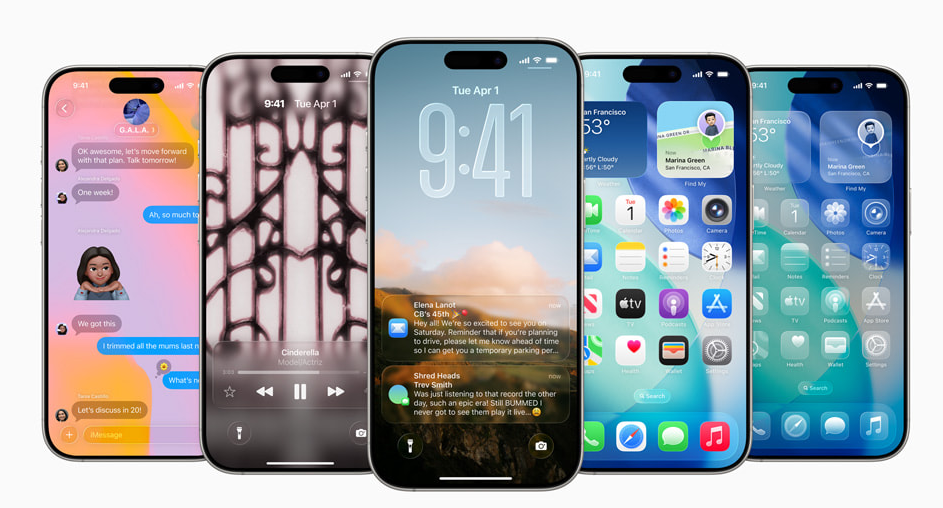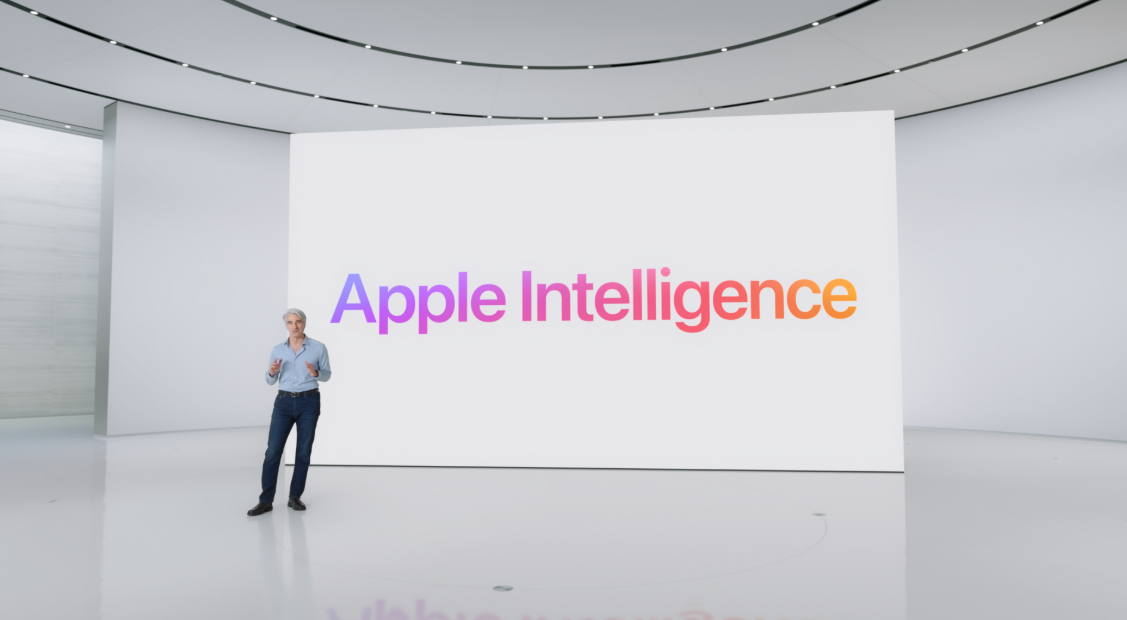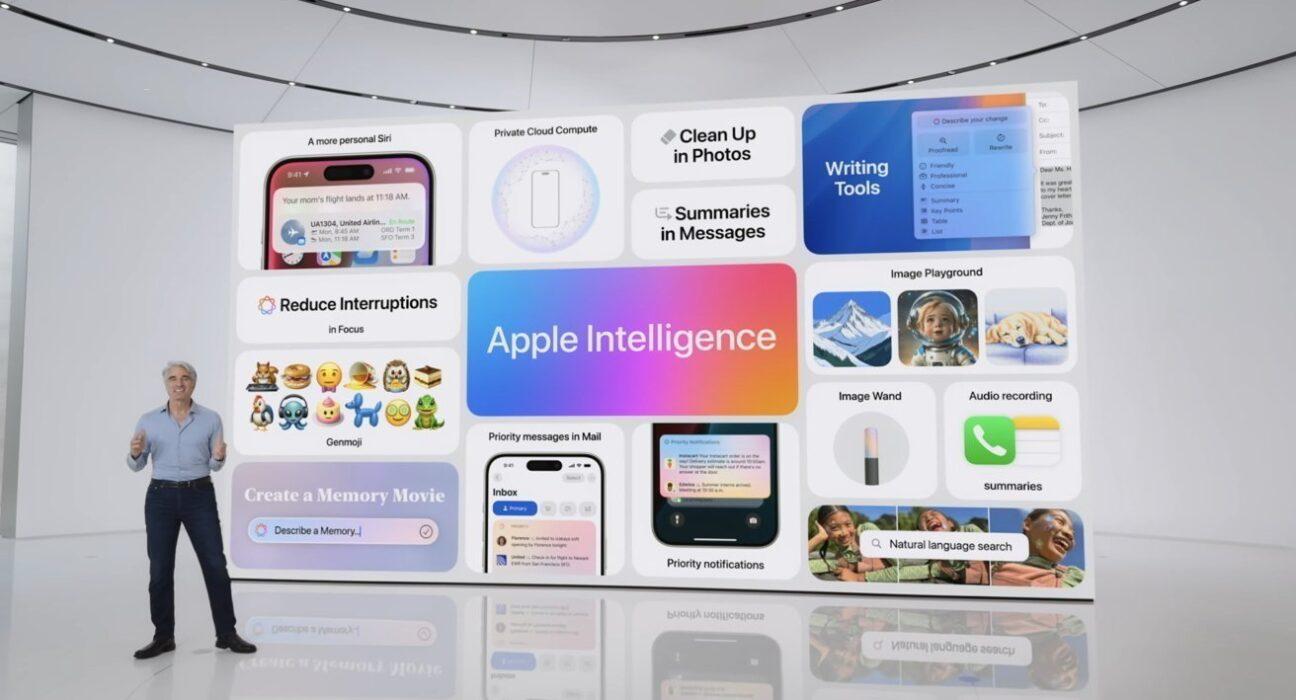Apple's AI Vision Unveiled: A Three-Pronged Strategy, with Siri 2.0 as Just the Tip of the Iceberg?
![]() 06/16 2025
06/16 2025
![]() 490
490
Apple's AI ambitions, long held in check, are now ready to be unleashed.
AI might be the last thing Apple wants to hear criticized right now.
There was a time when Apple's Siri dominated the global market, proving that intelligent voice assistants could transcend the bounds of "artificial stupidity." Apple was also among the pioneers in integrating machine learning and other AI technologies into mobile system functions. Recall when only Apple's photo albums offered features like automatic portrait categorization.
Moreover, Apple extensively employs machine learning in various functions, such as image algorithms, predictive input, and Face ID, to enhance user experience. It can be argued that, besides the power of A-series chips, the iPhone's success is also attributed to iOS, which has long embraced AI technology.

Image source: Apple
However, as we entered the era of large AI models, Apple seemingly overnight became a laggard. At the recent WWDC 2025, Apple's AI service updates were described as "unremarkable," leading to a stock price plunge on the first day of the conference. From June 9th to 13th, Apple's stock price fell from a high of $205 on the 9th to $196.
Although Apple traditionally remains indifferent to short-term stock price fluctuations, market and user skepticism have indeed put considerable pressure on the company. Perhaps intentionally or unintentionally, a Bloomberg article revealed multiple AI projects that Apple is advancing.
Some of these projects were previously disclosed, such as a more intelligent and perceptive Siri, while others, like the Knowledge chatbot, revealed details for the first time. This briefly caused Apple's stock price to rebound. Now, let's delve into Apple's AI blueprint.
Three-Pronged Approach! Apple's AI Blueprint Exposed
According to the article, Apple is internally pushing forward with three main service-oriented AI projects: 1. Siri 2.0; 2. Knowledge chatbot; 3. Resident assistant (Copilot). The resident assistant is a backend intelligent AI built on Siri and is not an independent new AI assistant.
Siri 2.0 was the AI project Apple primarily discussed at WWDC. Interested readers can refer to our related article published on the 10th: "AI Siri to be Discussed Next Year! Apple AI's 'Big Turn': No More Pie in the Sky?" I won't repeat that here, but let's delve into the other two projects.
First, let's look at the Knowledge chatbot. This AI project was first exposed on June 1st when renowned Apple leaker Mark Gurman disclosed its existence, describing it as a "ChatGPT-style application that scrapes information from open web pages."

Image source: OpenAI
This description provides a preliminary understanding of Knowledge's usage. Subsequent articles provided a clearer functional explanation. Knowledge is an AI question-and-answer service running on web apps. "Knowledge" is the nickname for employees, and the official project name may be "AppleGPT 2.0." The data primarily comes from "Safari Search Index + NewsKit Report Summaries + Apple Maps POI," and it is led by former Siri head Robby Walker.
To some extent, Knowledge is a web-based AI assistant that shares some of Siri's functions, being lighter and simpler. It can provide users with functions like memos, calendars, and draft emails without using microphones or cameras, relying solely on web data.
Additionally, users can view it as an AI-enhanced version of the Safari search engine. When you need to search for an answer, Knowledge can provide an integrated AI response. One might ask, why not integrate it directly into Siri? This leads us to Apple's AI strategy. Apple places great importance on AI, setting ambitious goals such as consistent Siri experiences across all scenarios.
Simply put, Apple hopes Siri can offer the same AI experience both online and offline, which places high demands on the iPhone's on-device computing power, making it challenging to implement. Even if subsequently realized with the help of new-generation chips and optimizations, Siri's high system permissions and user privacy data make Apple hesitant to use it in apps requiring frequent network interactions.

Image source: Apple
Therefore, spinning off an independent "chatbot" to handle lightweight AI applications is a practical solution. Moreover, Apple seems to be using this to test different prompt systems to determine which is more efficient or has better understanding capabilities.
So, what exactly is Copilot (it will likely be renamed upon release)? This is intriguing. According to the exposed information, the resident assistant is not an independent app but a system-wide global service. If Siri is a passive assistant, then Copilot is an active assistant. Without users actively requesting it, Copilot can intelligently determine users' needs based on various data such as microphones and GPS location.
For example, when you walk to the boarding gate at the airport, Copilot will automatically display your electronic boarding pass based on your itinerary, GPS location, boarding time, and other data, or provide proactive suggestions in conjunction with devices like the Apple Watch. After a workout, it can intelligently recommend recipes based on your body's energy expenditure, dietary menu, and preferences, or even directly help users search for nearby takeout restaurants, providing a one-stop service for recommendations, ordering, and payment.
In Apple's plan, Copilot will utilize on-device security chips and a unified push link to ensure user privacy security during service operation. Furthermore, Apple may intend to build Copilot into an intelligent agent that permeates the entire Apple ecosystem, serving as Apple's intelligent hub to connect various devices and provide seamless AI services to users.
However, compared to Siri 2.0 and Knowledge, there is still limited information about Copilot, so more specific functions and experiences await further disclosure. Although it's still a "pie in the sky" overall, it's at least more appealing than Siri 2.0 announced at WWDC. Moreover, it's evident that Apple has broader thoughts on the AI ecosystem, aiming to make AI "ubiquitous."
Why is Apple's AI Implementation Fraught with Difficulties?
Apple's progress in the AI field has indeed surprised everyone. When large AI models first gained widespread attention in 2023, Apple had already initiated an AI large model project named "Ajax" and began publishing related papers and results the following year. At that time, everyone believed Apple would be among the first to popularize AI in 2024.
However, things did not proceed as planned. The launch of Apple Intelligence was severely delayed. Even in North America, where the function was first available, not all features demonstrated at WWDC 2024 have been rolled out. Moreover, after Apple Intelligence's launch, users found the experience far from what Apple had advertised, further exacerbating market and user distrust in Apple's AI projects.

Image source: Apple
By 2025, when reviewing Apple's AI strategy, it's clear that Apple's biggest problem may be that it "wants too much." Self-developed AI large models, comprehensive user privacy protection, stringent data security requirements, and system-level AI service responses – achieving any one of these could make Apple a frontrunner in the AI field.
However, Apple's stringent requirements for user data and privacy protection have severely hindered the progress of self-developed AI large models, to the point where it had to turn to OpenAI and use ChatGPT to support the model needs of the first-generation Apple AI functions. Then, due to limited open data permissions, Apple Intelligence, based on ChatGPT, struggled to provide a truly personalized AI experience.
Although from a user's perspective, it's reassuring that Apple places such importance on privacy and data security, everyone also questions: Can Apple truly ensure the AI experience while respecting privacy? At least from Apple's perspective, it's possible because even after WWDC 2025, Apple is still emphasizing that it will prioritize meeting user needs with local AI large models and AI chips.
Furthermore, Apple's vision of allowing users to experience consistent AI functions anytime, anywhere, is commendable but challenging to achieve at this stage. The vast gap between cloud computing power and on-device computing power makes the parameter gap between AI models on both ends almost unbridgeable. Only the cloud can accommodate the on-device side. So, how can Apple achieve top-tier AI experiences with parameters far inferior to its competitors?

Image source: Apple
Perhaps one can only hope that Apple's AI team can achieve a high level of reasoning efficiency and performance for its self-developed AI large models through deep optimization. More directly, Apple may still lack a "DeepSeek" moment. Only through thorough optimization and transformation of the underlying reasoning of AI large models can Apple realize its vision.
To further accelerate the pace of AI projects, Apple has recently made frequent personnel adjustments. Apple aims to concentrate efforts to ensure that the most critical projects can be delivered on schedule. That's right, I'm referring to Siri 2.0, announced at WWDC 2025. Although there are still over six months until the scheduled launch, Apple is obviously dissatisfied with the original Siri team and hopes to improve team efficiency by changing the leader.
In fact, media reports have previously suggested that the progress of the AI project within the Siri team was too slow, prompting the iOS team to decide to push forward with its own AI project. However, the Siri team likely faces its own challenges. It's said that due to Siri's legacy data and previous machine learning models, integrating them with new AI models is challenging and requires a large-scale reconstruction of Siri.
Overall, Apple's AI projects do face numerous issues. However, compared to the AI plans of other mobile phone brands, Apple's projects are arguably superior in both functional performance and user data protection. If Siri 2.0 can be successfully launched in 2026, then there is still hope.
Images in this article are from: 123RF Authenticated Image Library Source: Leitech







